

Scotland, a land woven with the richest tapestries of history, culture, and natural beauty, stands as a testament to the ages that have passed. Among its most iconic symbols are the majestic castles dotting the rugged landscapes, silent witnesses to centuries of history. These castles, more than mere stone structures, are the soul of Scotland, encapsulating the essence of its tumultuous history, architectural ingenuity, and the indomitable spirit of its people.
From the mist-shrouded highlands to the lush, rolling hills of the lowlands, Scottish castles emerge from the landscape as if carved from the very earth by the hands of history itself. Each castle tells a unique story—a tale of power, intrigue, warfare, and romance. They have been the backdrop for significant historical events, from the Wars of Scottish Independence to the Jacobite uprisings, playing pivotal roles in shaping the nation’s destiny.
Today, these castles transcend their martial origins, serving not only as a window into the past but also as a beacon for tourists from around the globe. They offer a glimpse into Scotland’s architectural evolution, from rugged fortresses to opulent palaces, each reflecting the period’s artistic and cultural currents. As we embark on this journey through Scotland’s castles, we invite readers to explore the hidden corners, grand halls, and towering battlements that tell the story of a nation’s identity, resilience, and artistic achievement.
In this blog, we will delve into the heart of Scotland’s heritage, exploring the historical background, architectural highlights, and the stories that breathe life into these stone sentinels. Join us as we uncover the majesty of Scotland’s castles, their significance in the past, their role in the present, and the efforts to preserve them for future generations to cherish.
Historical Background of Castles in the Region
The story of Scotland’s castles begins in the mists of early medieval times, with the earliest structures being simple wooden fortifications built on top of earthen mounds, known as motte-and-bailey castles. These early castles were primarily defensive structures, erected by Norman and indigenous Scottish rulers alike to secure their territories and assert their dominance over the rugged landscape.
As the centuries progressed, so too did the complexity and strength of Scottish castles. The transition from wood to stone in the 12th and 13th centuries marked a significant evolution in castle architecture, reflecting advances in military technology and the increasing need for more durable fortifications. This period saw the construction of formidable stone keeps and tower houses, designed to withstand sieges and offer better protection for their inhabitants.
The Wars of Scottish Independence (1296–1357) were a pivotal era for Scotland and its castles. These structures were not only military fortresses but also symbols of power and control. They played crucial roles in the conflicts between Scotland and England, with many castles changing hands multiple times. The legendary figures of William Wallace and Robert the Bruce used these castles as strategic assets in their campaigns for Scotland’s freedom, underscoring the castles’ significance in the nation’s fight for sovereignty.
Architecturally, Scottish castles are a melting pot of influences, showcasing features from Norman, Gothic, and Renaissance styles. This eclectic mix is evident in the variety of castles found across the country, from the imposing fortresses of Edinburgh and Stirling to the elegant Renaissance palaces such as Falkland and Linlithgow. The introduction of the Z-plan castle in the 16th century, with its distinctive arrangement of towers for improved defense, further demonstrates the innovation in Scottish castle design.
The castles also served as centers of administration, justice, and governance, reflecting their importance in the social and political fabric of medieval Scotland. They were the residences of kings, nobles, and clan chiefs, who hosted lavish feasts and were patrons of the arts, contributing to the cultural richness of the Scottish Renaissance.
Despite their robust construction, many of Scotland’s castles fell into ruin over the centuries, victims of warfare, neglect, or the passage of time. The 18th and 19th centuries saw a renewed interest in these historical structures, with the Romantic movement inspiring the restoration and preservation of many castles. This period also witnessed the construction of “revival” castles, built in the Gothic style, such as the famous Balmoral Castle, a testament to the enduring fascination with Scotland’s medieval past.
Today, the castles of Scotland stand as monuments to the country’s history, embodying centuries of architectural innovation, political intrigue, and cultural development. They remain a key part of Scotland’s identity, attracting scholars, tourists, and history enthusiasts from around the world, eager to explore the legacy of these magnificent structures.
Major Castles in the Scotland
Edinburgh Castle: A Fortress in the Sky
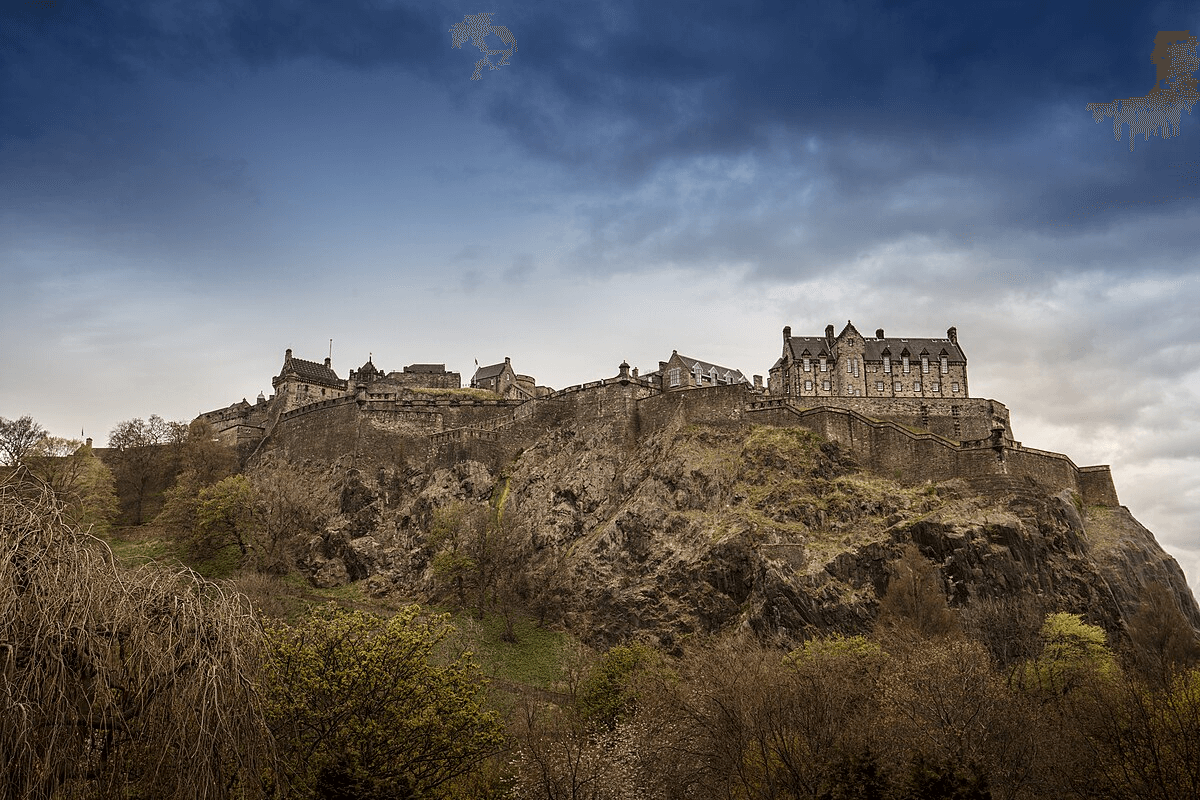
Brief History: Perched atop an extinct volcanic crag, Edinburgh Castle dominates the skyline of Scotland’s capital. Its strategic location has made it a focal point of Scottish history for centuries. The castle has witnessed many of the most dramatic and significant events in Scotland’s past, from the Wars of Scottish Independence to the Union of the Crowns in 1603. It has served as a royal residence, military garrison, and fortress, enduring numerous sieges throughout its history.
Architectural Highlights: Edinburgh Castle is a testament to Scottish architectural ingenuity, with buildings from the 12th to the 21st centuries. The Great Hall, built by James IV in 1511, is a masterpiece of medieval architecture, while the Scottish National War Memorial, added after World War I, commemorates Scots who have died in battle. The Crown Jewels of Scotland, housed within the Crown Room, and the Stone of Destiny are among the castle’s most prized possessions.
Visitor Information: Open year-round, Edinburgh Castle offers a glimpse into Scotland’s turbulent history. Visitors can explore the Royal Palace, the Great Hall, St. Margaret’s Chapel (the oldest building in Edinburgh), and the Prisons of War. The castle also offers stunning views of the city from its ramparts. Advanced booking is recommended, especially during the busy summer months.
Scone Palace: The Crowning Place of Scottish Kings
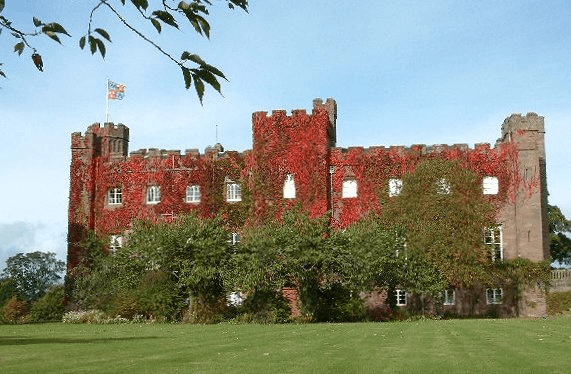
Brief History: Scone Palace, located near Perth, holds a unique place in Scotland’s history as the original home of the Stone of Destiny and the site where Scottish kings were crowned. The current palace, constructed in the early 19th century, sits near the location of the original Scone Abbey, which dates back to the 12th century. This historic site has witnessed some of the most significant events in Scottish history, including the coronations of Macbeth, Robert the Bruce, and Charles II, among others.
Architectural Highlights: The palace as it stands today is a superb example of late Georgian Gothic style, designed by renowned architect William Atkinson. Its interiors are richly decorated, showcasing a mix of historical artifacts, fine furniture, and beautiful antiques. The State Rooms, including the Long Gallery, the Drawing Room, and the Dining Room, are particularly noteworthy for their opulence and historical significance.
Visitor Information: Scone Palace is open to the public, offering visitors the opportunity to explore its magnificent interiors and the beautifully landscaped grounds. The palace’s gardens are a highlight, featuring a variety of themed areas such as the Pinetum, the Murray Star Maze, and the Kitchen Garden. Visitors can also explore the Moot Hill, the ancient crowning place of Scottish kings, marked by a replica of the Stone of Scone.
Photo Author Peter Hodge
Stirling Castle: Gateway to the Highlands
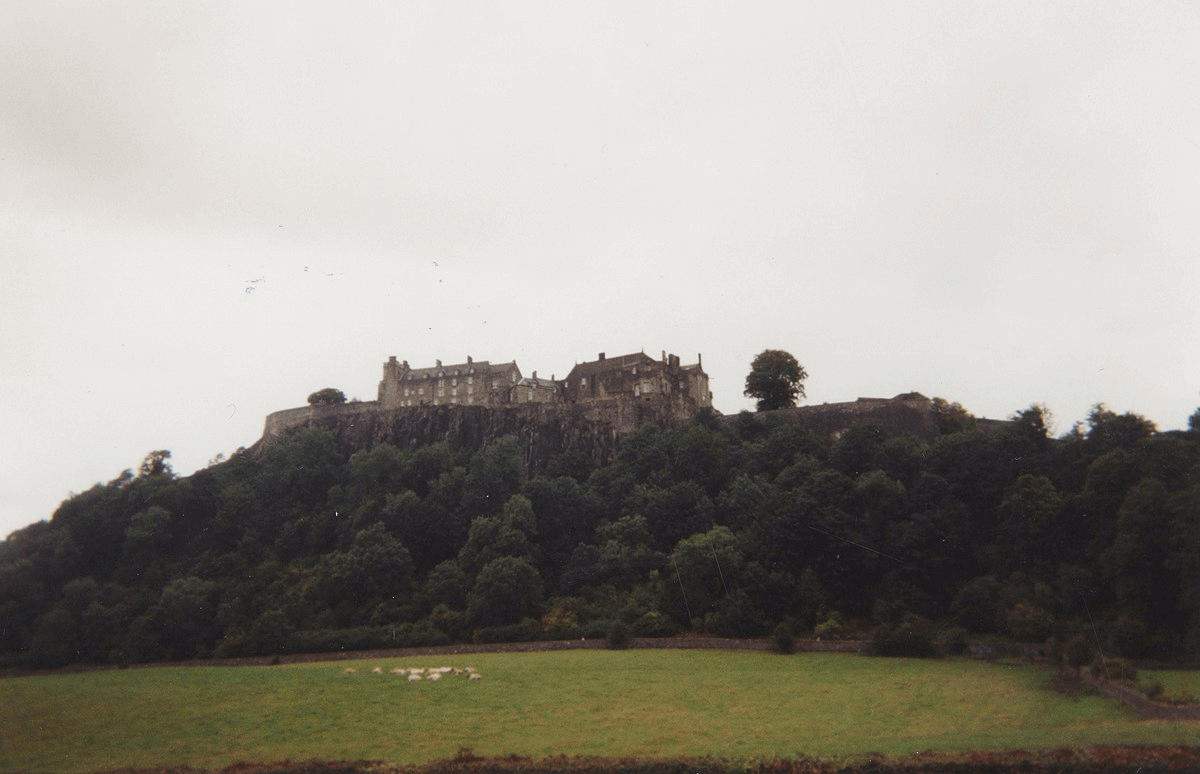
Brief History: Stirling Castle is one of Scotland’s most historically important sites, where over 300 years of the country’s history were written. Located on a volcanic rock, it commands the surrounding landscape, including the site of William Wallace’s victory at Stirling Bridge in 1297. The castle was a favored residence of Scotland’s kings and queens, including Mary, Queen of Scots, who was crowned here in 1542.
Architectural Highlights: The castle’s architecture reflects its importance as a symbol of Scottish Renaissance. The Royal Palace, restored to its 16th-century splendor, is among the best examples of Renaissance architecture in Scotland. The Great Hall, the Chapel Royal, and the Queen Anne Gardens are significant highlights, showcasing the castle’s architectural and historical richness.
Visitor Information: Stirling Castle is open to the public, offering guided tours that bring its rich history to life. Visitors can explore the Royal Palace, the Great Hall, and the Chapel Royal, among other attractions. The castle also hosts various historical reenactments and events throughout the year, providing a dynamic experience of Scotland’s past.
Balmoral Castle: The Royal Retreat
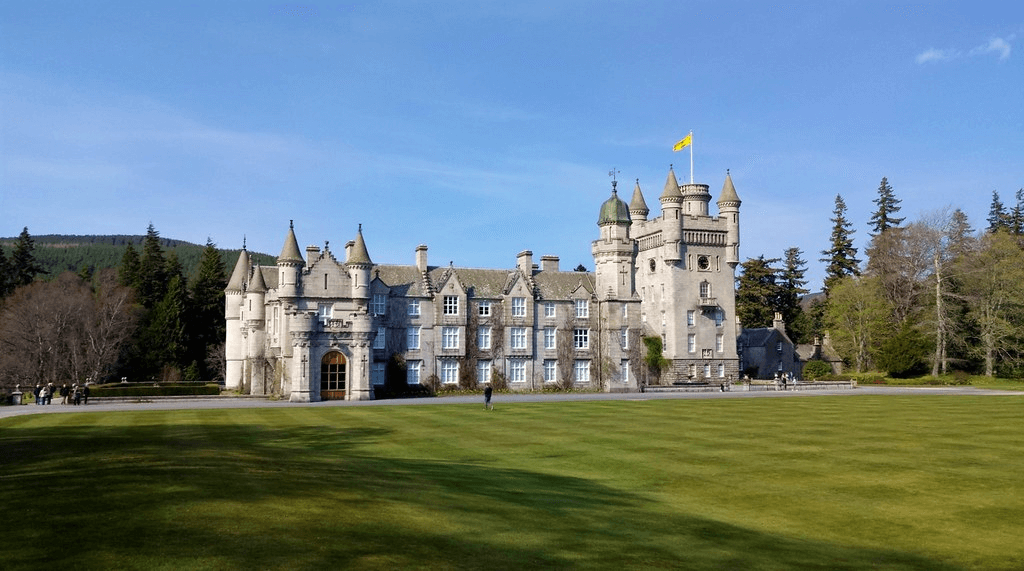
Brief History: Balmoral Castle, located in Royal Deeside, Aberdeenshire, has been the Scottish home of the British royal family since it was purchased by Prince Albert for Queen Victoria in 1852. Unlike the ancient fortresses that dominate Scotland’s landscape, Balmoral is a relatively recent construction, designed in the Scottish Baronial style. It has since been a private retreat for the royal family, where they enjoy the tranquility and natural beauty of the Highlands.
Architectural Highlights: The castle’s design incorporates elements typical of the Scottish Baronial style, including turrets, gables, and the use of local granite, which gives it a distinctive appearance. The estate covers over 50,000 acres, featuring gardens, woodlands, and wildlife habitats. Though much of the castle and grounds are private, the estate’s setting in the Cairngorms National Park offers stunning views and a glimpse into the lifestyle of the British monarchy.
Visitor Information: Balmoral Castle opens its doors to the public from April to July, when visitors can explore the castle’s gardens, exhibitions, and the ballroom, the only room in the castle that guests are allowed to enter. The estate also offers guided walks, allowing visitors to experience the natural beauty of the Scottish Highlands.
Eilean Donan Castle: Icon of the Highlands
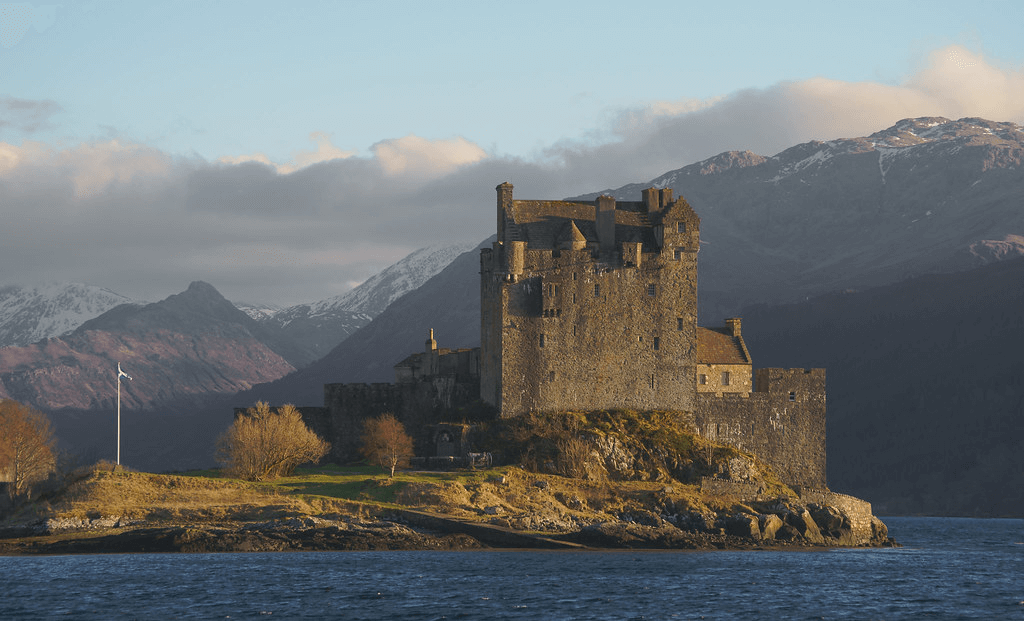
Brief History: Eilean Donan, located on a small tidal island where three sea lochs meet, is one of the most photographed monuments in Scotland. The original castle was founded in the 13th century as a defense against Viking incursions, playing a strategic role in the Lord of the Isles’ power struggles. It was largely destroyed in a Jacobite uprising in 1719 and lay in ruins for almost 200 years before Lieutenant Colonel John MacRae-Gilstrap bought and meticulously restored it in the early 20th century.
Architectural Highlights: The castle that visitors see today is a romantic reconstruction of the earlier fortification, combining elements of medieval castle architecture with early 20th-century ideas of what a castle should be. Its picturesque setting and atmospheric design make it a quintessential Scottish castle, complete with a stone bridge connecting it to the mainland.
Visitor Information: Eilean Donan is open to the public, offering access to its rich history and stunning interiors. Visitors can explore the castle’s banquet hall, bedrooms, and the exhibit detailing its restoration. The castle also serves as a popular venue for weddings and events, thanks to its breathtaking scenery and romantic allure.
Culzean Castle: A Cliff-top Marvel
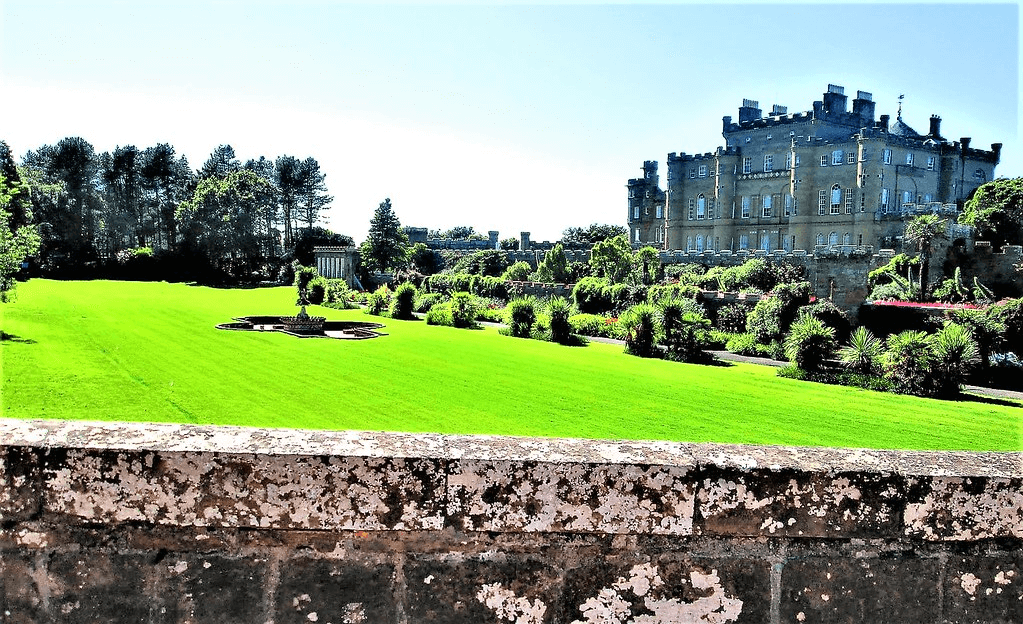
Brief History: Culzean Castle, perched atop the cliffs of the Ayrshire coast, was constructed in the late 18th century for David Kennedy, 10th Earl of Cassilis. Designed by Robert Adam, one of Scotland’s most celebrated architects, the castle is a masterpiece of the Scottish Enlightenment and reflects the period’s taste for classical and Gothic revival styles.
Architectural Highlights: Culzean Castle is renowned for its elegant interiors, including the Oval Staircase, the Round Drawing Room, and the Armoury, which houses one of the largest collections of flintlock pistols and swords in Scotland. The castle’s dramatic setting, with its gardens and woodland walks overlooking the Firth of Clyde, adds to its allure.
Visitor Information: The castle and its grounds are managed by the National Trust for Scotland and are open to visitors. Guests can enjoy guided tours of the castle’s interior, explore the extensive gardens, and take part in various events and activities hosted throughout the year.
Dunnottar Castle: A Ruined Fortress on the Cliff
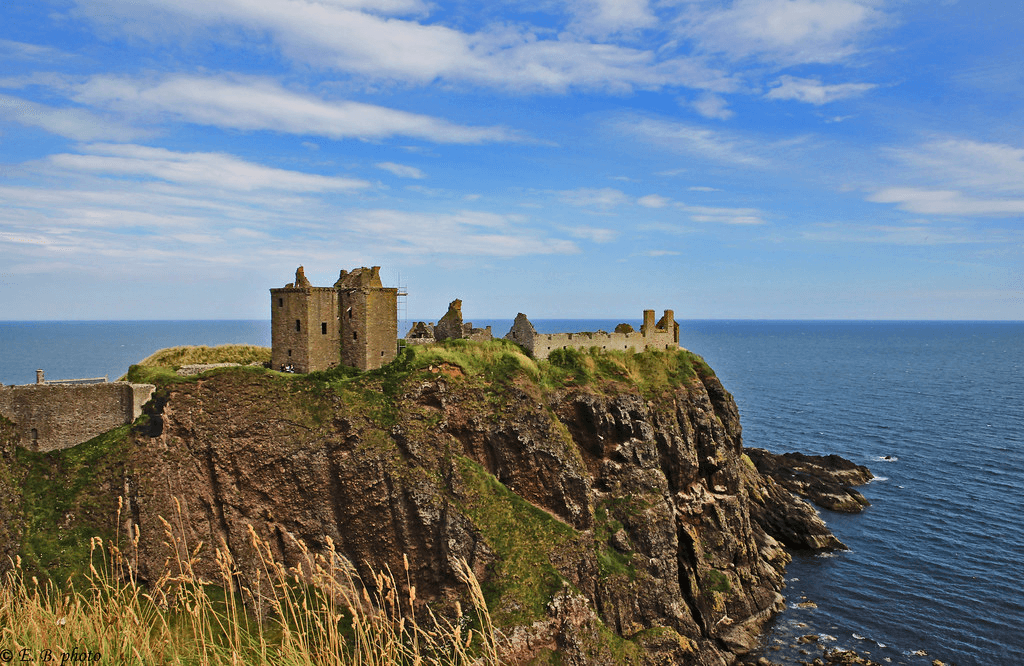
Brief History: Dunnottar Castle is a dramatic and evocative ruin located on a rocky headland on the northeastern coast of Scotland. With a history that stretches back to the early Middle Ages, the site has been fortified since at least the 9th century. Dunnottar has played a pivotal role in Scotland’s history, notably as the place where the Honours of Scotland were hidden from Oliver Cromwell’s invading army in the 17th century.
Architectural Highlights: Although now a ruin, Dunnottar’s remains offer a breathtaking glimpse into medieval castle construction, clinging to the cliffs amidst the pounding sea below. The layout includes the keep, barracks, lodgings, and chapel, all encircled by formidable defensive walls. The dramatic setting and structural remnants speak volumes of its past significance and the ingenuity of its construction.
Visitor Information: Dunnottar Castle is open to the public, offering a unique opportunity to explore its sprawling ruins and enjoy panoramic views of the North Sea. The site’s rugged beauty and historical aura make it a must-visit for history enthusiasts and photographers alike.
Urquhart Castle: Guardian of Loch Ness
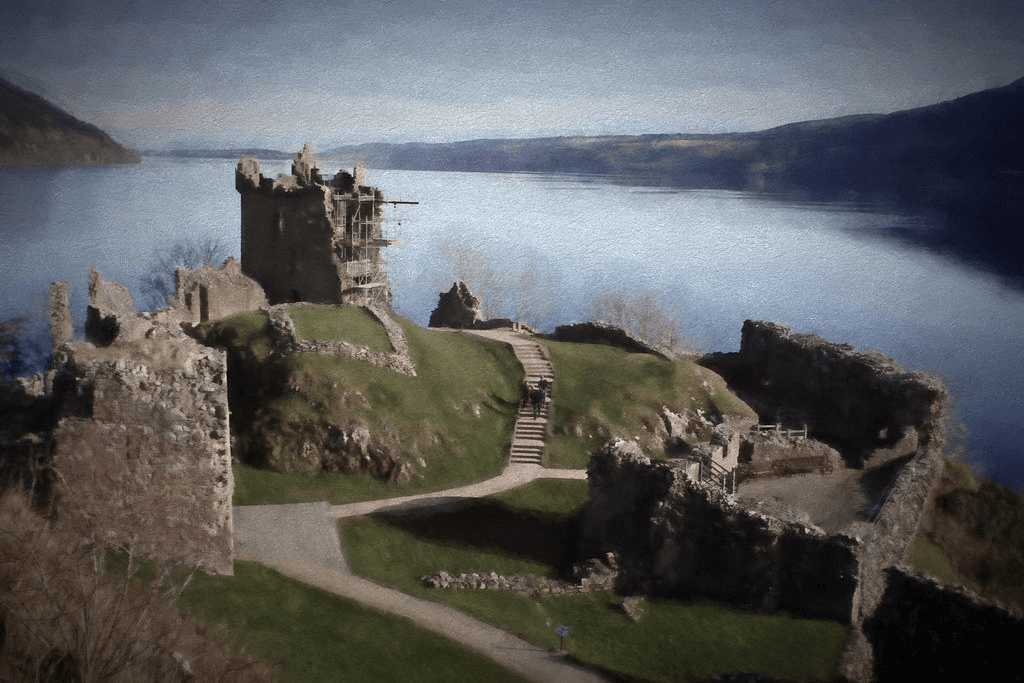
Brief History: Urquhart Castle, overlooking the mysterious waters of Loch Ness, boasts a history that dates back over a thousand years. Frequently embroiled in Scotland’s power struggles, it was a royal stronghold and witnessed considerable conflict during the Wars of Scottish Independence. The castle changed hands repeatedly and was eventually blown up in 1692 to prevent its use by Jacobite forces.
Architectural Highlights: Today, Urquhart’s picturesque ruins offer insights into medieval life. Key features include the Grant Tower, which offers commanding views of Loch Ness, the great hall, and the gatehouse. The castle’s position on the loch’s shore makes it one of Scotland’s most scenic historical sites.
Visitor Information: Visitors can explore the ruins, visit the modern visitor center, and enjoy stunning views of Loch Ness, perhaps even catching a glimpse of the legendary Nessie. Urquhart Castle is a compelling site for anyone interested in Scotland’s tumultuous history and natural beauty.
Glamis Castle: A Royal Legacy
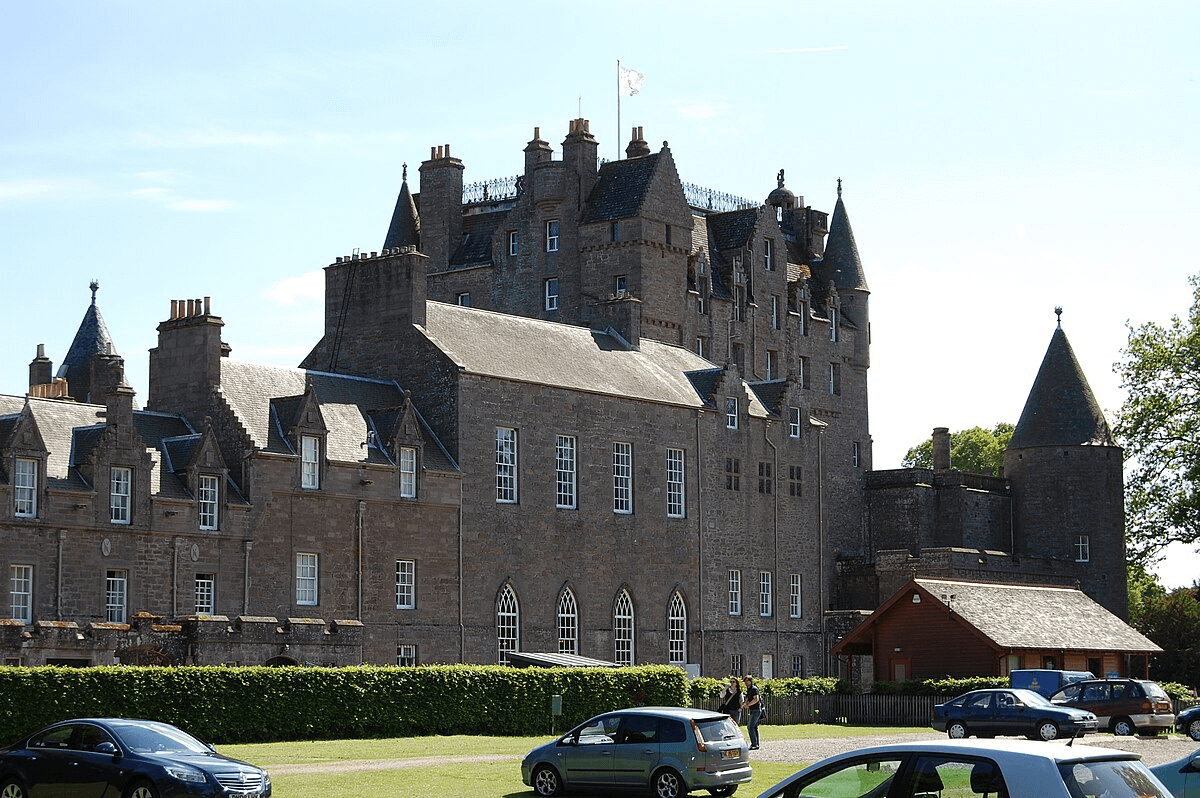
Brief History: Glamis Castle, located in the heart of Angus, is the legendary setting for Shakespeare’s “Macbeth” and the childhood home of HM Queen Elizabeth The Queen Mother. With roots stretching back to the 14th century, the castle has been the seat of the Lyon family since 1372. Its rich history is imbued with tales of royalty, intrigue, and even ghost stories, making it one of Scotland’s most fascinating stately homes.
Architectural Highlights: The castle’s architecture is a stunning example of Scottish baronial style, featuring turrets, towers, and battlements. The interior is equally impressive, with beautifully furnished rooms that reflect the castle’s long and illustrious history.
Visitor Information: Glamis Castle welcomes visitors to explore its magnificent halls, gardens, and grounds. The castle offers a range of tours, including the popular ghost tours, which delve into its myths and legends. The extensive grounds provide a perfect setting for a family day out, with beautiful walks and a nature trail.
Dunrobin Castle: The Fairytale Castle
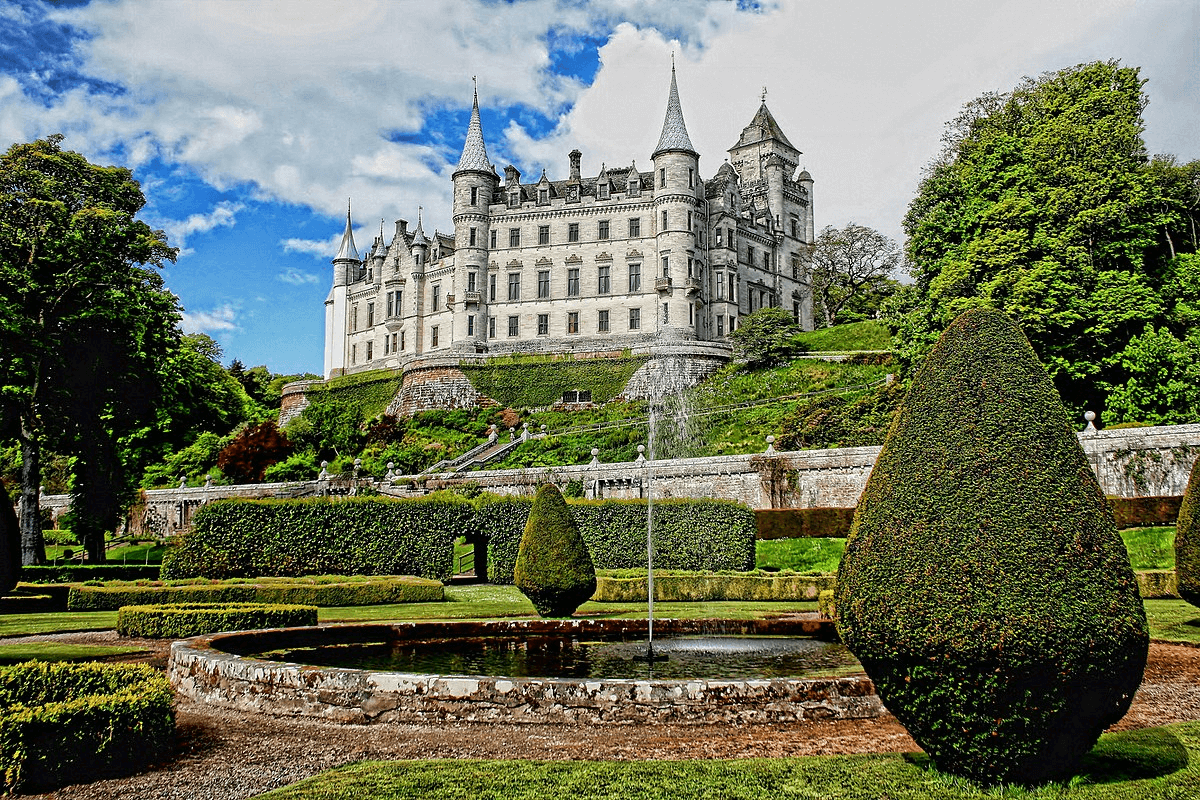
Brief History: Dunrobin Castle, the largest in the northern Highlands, has been the seat of the Earls and Dukes of Sutherland since the 13th century. Its current appearance, reminiscent of a French château, dates from the 19th century, thanks to architect Sir Charles Barry. The castle’s history is marked by both its architectural evolution and its owners’ involvement in the Highland Clearances, adding a complex layer to its legacy.
Architectural Highlights: The castle’s fairytale appearance is enhanced by its 189 rooms and splendid gardens, designed in the style of Versailles. Dunrobin’s interiors are richly furnished, showcasing fine art, tapestries, and antique furniture. The formal gardens, with their intricate designs and exotic plants, are a highlight for visitors.
Visitor Information: Dunrobin Castle is open to the public, offering guided tours of the castle and self-guided tours of the gardens. The falconry displays are a unique attraction, providing an insight into this ancient sport. The castle’s museum, housed in the old summer house, features a collection of Pictish stones and other local artifacts.
Conservation and Tourism
The conservation of Scotland’s castles is a monumental task, involving a delicate balance between preserving these historic structures for future generations and making them accessible to the public. These castles are not only significant cultural and historical assets but also key drivers of tourism, which is a vital part of Scotland’s economy. However, the influx of visitors presents challenges, including wear and tear on the ancient structures and the need for continuous maintenance and restoration efforts.
The Role of Conservation Organizations
Organizations such as Historic Environment Scotland, the National Trust for Scotland, and private owners play a crucial role in the conservation of Scottish castles. They are responsible for a range of activities, including structural repairs, restoration of historic interiors, and the conservation of artifacts found within these castles. These efforts often require significant financial investment, with funding coming from government grants, private donations, and revenue generated through tourism.
Challenges and Solutions in Castle Conservation
One of the primary challenges in conserving castles is addressing the damage caused by time and the elements, including moisture intrusion, erosion, and vegetation growth that can weaken structures. Conservation efforts must also be sensitive to the historical integrity of the buildings, using traditional materials and techniques wherever possible to maintain authenticity.
Sustainable tourism practices are increasingly important in managing the impact of visitors. Measures such as limiting visitor numbers, timed entry, and the development of virtual tour experiences can help reduce physical strain on the castles while still providing an enriching experience for visitors.
Success Stories and Ongoing Projects
There are numerous success stories in the conservation of Scottish castles, where innovative approaches have revived structures at risk of being lost. For example, the restoration of Eilean Donan Castle in the 20th century transformed it from a ruin to one of Scotland’s most iconic landmarks. Ongoing projects continue to focus on both major landmarks and lesser-known castles, ensuring their stories and beauty remain accessible for future generations.
Visiting the Castles: Tips and Recommendations
Visiting Scotland’s castles can be a highlight of any trip to the country, offering insights into Scotland’s history, culture, and architectural achievements. Here are some tips and recommendations to enhance your castle-visiting experience:
- Plan Ahead: Many castles have limited capacity or require advance booking, especially during peak tourist seasons. Check opening times and ticket availability before your visit.
- Respect Conservation Efforts: Follow guidelines and restrictions in place to protect the castles. This includes not touching fragile structures and adhering to designated paths.
- Explore Beyond the Famous Castles: While iconic castles like Edinburgh and Stirling are must-sees, Scotland is home to hundreds of lesser-known castles, each with its own charm and history.
- Consider Guided Tours: Many castles offer guided tours, which can provide deeper insights into the history and significance of the site. Specialized tours, such as ghost tours or historical reenactments, can offer unique perspectives.
- Check for Events: Castles often host events, from medieval fairs to concerts and exhibitions, which can add a special element to your visit.
Conclusion
Scotland’s castles are more than just stone; they are the keepers of history, symbols of cultural identity, and showcases of architectural prowess. The efforts to conserve these treasures are crucial, ensuring they continue to inspire and educate visitors from around the world. As we explore these magnificent structures, let us do so with respect and wonder, mindful of the legacy they carry and our role in preserving it for generations to come.

